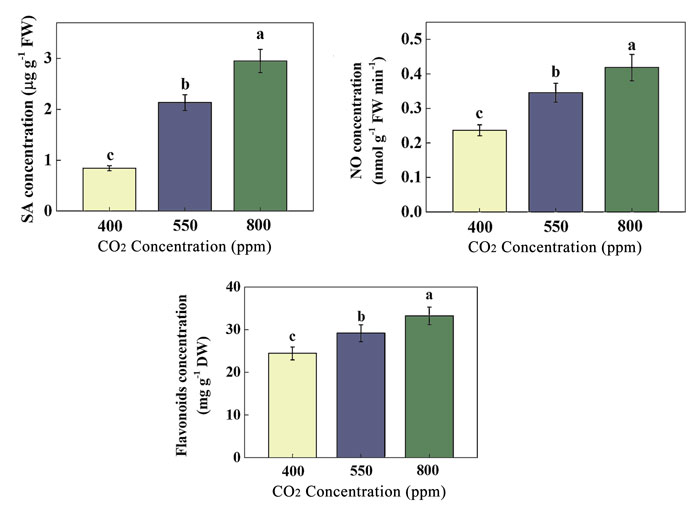| Tweet | Follow @co2science |
Paper Reviewed
Li, X., Zhang, L., Ahammed, G.J., Li, Y.-T., Wei, J.-P., Yan, P, Zhang, L.-P., Han, X. and Han, W.-Y. 2019. Salicylic acid acts upstream of nitric oxide in elevated carbon dioxide-induced flavonoid biosynthesis in tea plant (Camellia sinensis L.). Environmental and Experimental Botany 161: 367-374.
Introducing the subject of their paper, Li et al. (2019) write that "flavonoids are a large group of phenylpropanoids (secondary metabolites) with approximately 10,000 known chemical structures in plants," adding they "impact food quality and contribute to plant defense against biotic and abiotic stressors." Because elevated CO2 enhances the production of secondary metabolites, it stands to reason that the historic and ongoing rise of this molecule may well be enhancing plant flavonoid concentration. And thus the team of nine researchers set out to investigate this hypothesis as it pertains to tea plants (Camellia sinensis cv. Longjing 43).
The experimental setup included exposing two year old tea seedlings to three levels of atmospheric CO2 (400, 550 and 850 ppm) in a controlled environment setting. Results of the study revealed that elevated CO2 enhanced the salicylic acid (SA) concentration, which triggered nitric oxide (NO) accumulation. Thereafter, nitrous oxide induced the phenylalanine ammonia-lyase (PAL) activity, which led to the enhancement of flavonoid concentration in the tea leaves.
Figure 1 illustrates the enhancement of SA, NO and flavonoid concentrations in the tea plant leaves at the three CO2 concentrations. In particular, under 550 ppm and 800 ppm CO2, SA concentration increased 2.53- and 3.51-fold, NO concentration increased by 46% and 77% and flavonoid concentration was enhanced by 19% and 36%, relative to ambient CO2 levels. In the future, therefore, it would appear that tea plants will benefit from CO2-induced increases in flavonoids, which will help improve plant defenses against environmental and biotic stresses while also enhancing plant quality.

Figure 1. Salicylic acid (SA), nitric oxide (NO) and flavonoid concentrations in tea plant leaves subjected to three different atmospheric CO2 levels. Adapted from Li et al. (2019).




